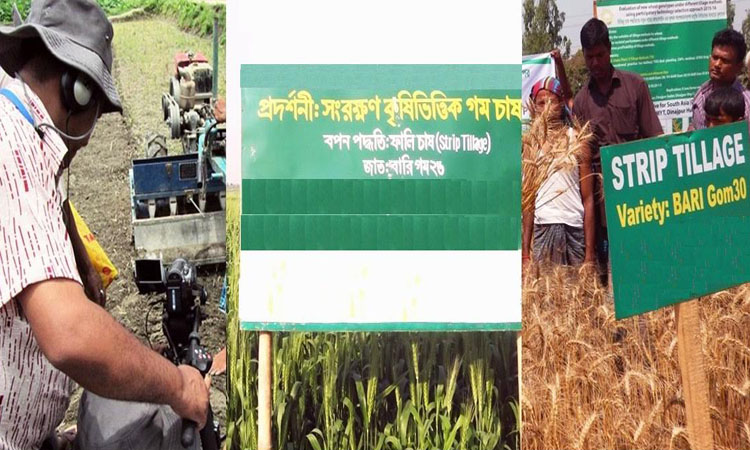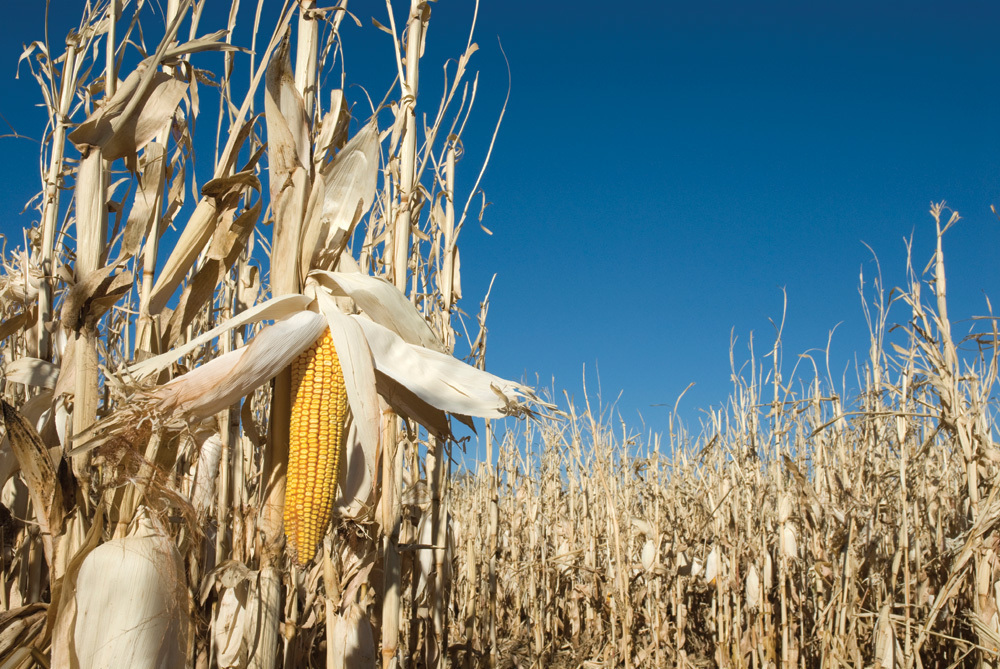Farmers reap benefits from conservation agriculture technologies – Bangladesh Sangbad Sangstha (BSS)

Report on the Adoption of Conservation Agriculture Technologies in Northern Bangladesh and its Contribution to Sustainable Development Goals
Executive Summary
Farmers in northern Bangladesh are increasingly adopting Conservation Agriculture (CA) technologies, leading to significant advancements in agricultural sustainability and productivity. This report details how these practices are contributing to multiple Sustainable Development Goals (SDGs) by enhancing food security, promoting environmental health, and improving economic outcomes for farming communities. Key stakeholders, including the Department of Agricultural Extension (DAE), Bangladesh Rice Research Institute (BRRI), and Barind Multipurpose Development Authority (BMDA), are actively promoting these technologies.
Contribution to SDG 2 (Zero Hunger) and SDG 1 (No Poverty)
The adoption of CA technologies directly addresses the goals of eradicating hunger and poverty by making agriculture more productive and profitable.
- Enhanced Food Security: Widespread implementation of CA is projected to increase overall crop production, strengthening food security in the face of climate change, a core target of SDG 2.
- Increased Profitability: Farmers experience reduced operational costs related to labor, fuel, and irrigation, which increases the profitability of farming and contributes to poverty reduction (SDG 1).
- Improved Livelihoods: By producing additional crops and improving efficiency, farmers are achieving a significant improvement in their living standards, aligning with the objectives of SDG 1.
Advancements in Climate Action and Water Management (SDG 13 & SDG 6)
CA technologies represent a form of climate-smart agriculture that promotes responsible water usage and builds resilience against climate-related challenges.
- Alternate Wetting and Drying (AWD): This irrigation method is expanding across the northern region, saving up to 30% of irrigation water while increasing paddy production by 0.50 tonnes per hectare. This directly supports SDG 6 (Clean Water and Sanitation).
- Raised Bed Technology: This eco-friendly system improves irrigation efficiency, saving 30% of water and increasing crop yields by 10% to 20%. It is a critical tool for sustainable water management under SDG 6.
- Climate Resilience: These practices help farmers adapt to the adverse effects of climate change, making the agricultural sector more resilient and sustainable, which is a key component of SDG 13 (Climate Action).
Impact on Environmental Sustainability (SDG 15 & SDG 12)
The implementation of CA technologies fosters healthier ecosystems and promotes the efficient use of natural resources, aligning with goals for environmental protection.
- Improved Soil Health: Practices such as minimum tillage, strip tillage, and crop residue retention enhance soil fertility, structure, and biodiversity, contributing to SDG 15 (Life on Land).
- Responsible Consumption and Production: The raised bed technology allows for a 30% to 40% reduction in seed and fertilizer usage, promoting efficient resource management as outlined in SDG 12.
- Ecosystem Restoration: The combined use of CA techniques and conserved water resources is helping to revive local ecosystems and improve biodiversity, a primary target of SDG 15.
- Reduced Weed and Pest Issues: Bed planting systems naturally reduce weed infestation and crop lodging, decreasing the reliance on chemical inputs.
Future Outlook and Recommendations
Experts agree that the widespread adoption of CA technologies is essential for the future of sustainable agriculture in the region. To accelerate this transition, the following actions are recommended:
- Accelerate Technology Dissemination: Efforts to popularize and rapidly disseminate the latest CA technologies among farmers must be intensified.
- Provide Financial Incentives: Increased government subsidies for the purchase of necessary machinery, inputs, and spare parts are crucial to facilitate broader adoption.
- Strengthen Institutional Support: Continued support and research from organizations like DAE, BRRI, and BMDA are vital for popularizing and refining CA practices.
Analysis of the Article in Relation to Sustainable Development Goals (SDGs)
1. Which SDGs are addressed or connected to the issues highlighted in the article?
- SDG 1: No Poverty
- SDG 2: Zero Hunger
- SDG 6: Clean Water and Sanitation
- SDG 12: Responsible Consumption and Production
- SDG 13: Climate Action
- SDG 15: Life on Land
2. What specific targets under those SDGs can be identified based on the article’s content?
-
SDG 2: Zero Hunger
- Target 2.3: By 2030, double the agricultural productivity and incomes of small-scale food producers. The article directly supports this by stating that conservation agriculture (CA) technologies are “making farming more profitable for farmers” and helping them “boost crop production at a low cost.”
- Target 2.4: By 2030, ensure sustainable food production systems and implement resilient agricultural practices that increase productivity and production, that help maintain ecosystems, that strengthen capacity for adaptation to climate change… and that progressively improve land and soil quality. The article highlights the adoption of CA technologies that are “improving the environment, ecosystems, biodiversity, soil health, and fertility” while ensuring food security “despite the negative impact of climate change.”
-
SDG 1: No Poverty
- Target 1.2: By 2030, reduce at least by half the proportion of men, women and children of all ages living in poverty in all its dimensions according to national definitions. The article connects to this target by explaining how CA technologies help farmers “significantly improve their living standards” through more profitable farming and lower cultivation costs for labor, fuel, and irrigation.
-
SDG 6: Clean Water and Sanitation
- Target 6.4: By 2030, substantially increase water-use efficiency across all sectors and ensure sustainable withdrawals of freshwater. The article provides specific examples of achieving this, such as the Alternate Wetting and Drying (AWD) irrigation method, which results in “savings of up to 30 percent of irrigation water,” and the raised bed technology, which saves “30 percent irrigation water.”
-
SDG 13: Climate Action
- Target 13.1: Strengthen resilience and adaptive capacity to climate-related hazards and natural disasters. The article emphasizes that farmers are using CA technologies to ensure food security “despite the negative impact of climate change” and refers to the adoption of “climate-smart CA farming techniques” as a way to cope with its adverse effects.
-
SDG 15: Life on Land
- Target 15.3: By 2030, combat desertification, restore degraded land and soil, including land affected by desertification, drought and floods, and strive to achieve a land degradation-neutral world. The article discusses how CA technologies are “improving… soil health and fertility,” “reviving the ecosystems,” and maintaining “sound soil health,” which directly contributes to restoring land and soil quality.
-
SDG 12: Responsible Consumption and Production
- Target 12.2: By 2030, achieve the sustainable management and efficient use of natural resources. The article describes several practices that align with this target, including the raised bed technology which saves “30 to 40 percent of seeds and fertilisers” and the AWD method which reduces water consumption, promoting more efficient use of agricultural inputs.
3. Are there any indicators mentioned or implied in the article that can be used to measure progress towards the identified targets?
-
Indicators for SDG 2 (Zero Hunger)
- Agricultural Yield Increase: The article explicitly mentions an increase of “0.50 tonnes of paddy per hectare of land” by using AWD technology and a “higher yield from 10 to 20 percent” with raised bed technology. This can measure progress towards Target 2.3.
- Farmer Profitability: The article states that CA technologies are “making farming more profitable” and reducing costs for “labours, fuel and irrigation.” This qualitative indicator measures progress towards increasing farmer incomes (Target 2.3).
-
Indicators for SDG 6 (Clean Water and Sanitation)
- Water Savings in Agriculture: The article quantifies water efficiency gains, stating that the AWD method saves “up to 30 percent of irrigation water” and raised bed technology saves “30 percent irrigation water.” This is a direct indicator for Target 6.4.
-
Indicators for SDG 12 (Responsible Consumption and Production)
- Reduction in Agricultural Inputs: The article notes that raised bed technology leads to “saving 30 to 40 percent of seeds and fertilisers.” This quantifies the more efficient use of natural resources as per Target 12.2.
-
Indicators for SDG 1, 13, and 15
- Adoption Rate of Sustainable Practices: The article implies this indicator by mentioning the “growing adoption of CA technologies” and that farmers are bringing “more Boro rice fields under AWD irrigation technology every year.” This can be used to measure progress in improving living standards (SDG 1), building climate resilience (SDG 13), and improving soil health (SDG 15).
- Improved Soil Health: While not quantified, the repeated mention of “improving… soil health and fertility” and maintaining “sound soil health” serves as a qualitative indicator for Target 15.3.
4. Table of SDGs, Targets, and Indicators
| SDGs | Targets | Indicators |
|---|---|---|
| SDG 1: No Poverty | 1.2: Reduce poverty in all its dimensions. | Increased farmer profitability; Improvement in living standards. |
| SDG 2: Zero Hunger | 2.3: Double the agricultural productivity and incomes of small-scale food producers. 2.4: Ensure sustainable and resilient agricultural practices. |
Increased crop yield (0.50 tonnes/hectare of paddy; 10-20% higher yield); Adoption rate of CA technologies; Reduced production costs. |
| SDG 6: Clean Water and Sanitation | 6.4: Substantially increase water-use efficiency. | Percentage of irrigation water saved (up to 30%). |
| SDG 12: Responsible Consumption and Production | 12.2: Achieve the sustainable management and efficient use of natural resources. | Percentage of seeds and fertilizers saved (30 to 40%). |
| SDG 13: Climate Action | 13.1: Strengthen resilience and adaptive capacity to climate-related hazards. | Adoption rate of climate-smart farming techniques. |
| SDG 15: Life on Land | 15.3: Combat desertification and restore degraded land and soil. | Qualitative improvement in soil health and fertility; Revival of ecosystems. |
Source: bssnews.net
What is Your Reaction?
 Like
0
Like
0
 Dislike
0
Dislike
0
 Love
0
Love
0
 Funny
0
Funny
0
 Angry
0
Angry
0
 Sad
0
Sad
0
 Wow
0
Wow
0













































































